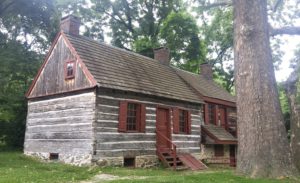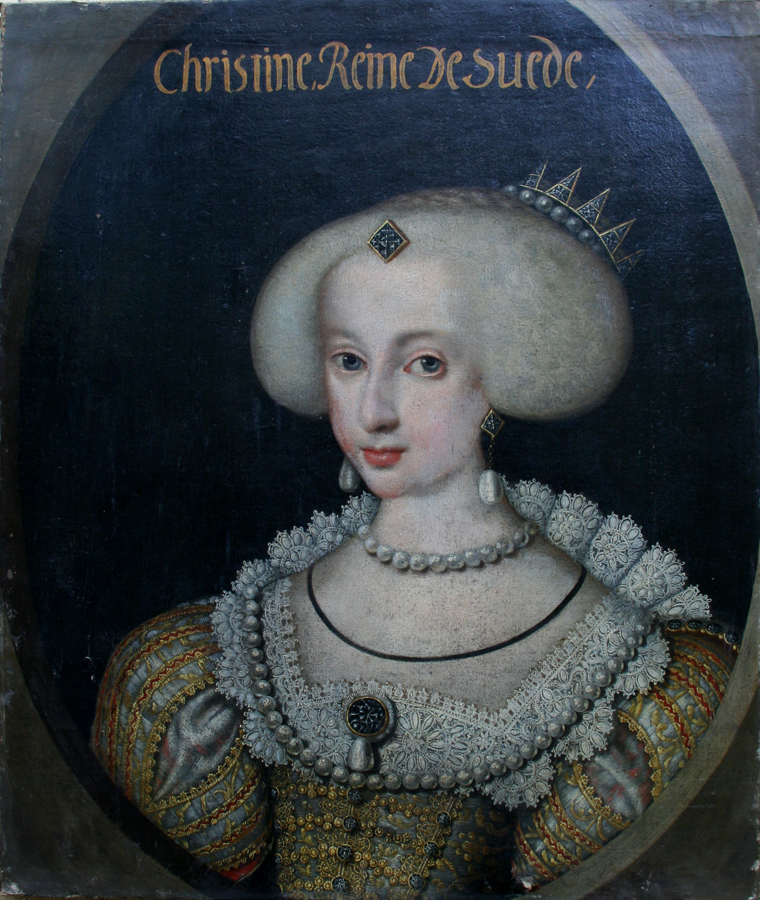
A 12-year-old Swedish queen took possession of Bucks County for 17 years.
Bucks County in its early history was Sweden. That is, New Sweden. Bucks was part of a Swedish colony in the New World that once covered lands around the Delaware River estuary. I can relate to the Swedes in a sense. My maternal grandparents Marie and Austin Braaten were immigrant Scandinavian farmers.
Bucks as New Sweden got me to wondering what life would have been like today. Would we be reminding outlanders at Christmas that a reindeer is food, not a pet? It’s traditional food of Sweden. You get it many ways. Smoked Rudolph. Rudolph steak. Roasted Rudolph. Rudolph stew. Ever popular is Rudolph salami paired with lingonberry jam (which goes with almost everything). If you were to get cabin fever this time of year, your Swedish neighbors would say you are “skogstokig” (meaning “forest crazy”). If you have no worries, you’d express it as “igen ko pa isen” (meaning “no cow on the ice”). Given the gloom of winter, we’d be demanding “fika”, Swedish for a jolt of caffeine and a donut. Swedes are known to fika five times a day. Sounds delightful. You’d “fika fika”when really fed up with a situation. But if a neighbor brought 5 types of sweets to the fika which requires 7, it’d be insulting. You’d yell angrily, “Vad fan!” Meaning, “What the devil!”
All of this is conjecture of course. New Sweden was too short-lived in America to have much impact. While it existed from 1638 to 1655, Swedish settlers founded a few villages and trading posts spread out around the entire Delaware River estuary. Like other European colonial powers, Sweden wanted a stake in North America’s lucrative fur and tobacco trade. By the time it got into the game however, only the Delaware River valley was open to colonization. England, France, Holland and Spain controlled the rest. So Swedish Queen Christina who was only 12 and obviously gifted beyond her years dispatched explorer Peter Minuit at the helm of Swedish ships “Kalmar Nyckel” and “Fogel Grip”in 1638 with 25 colonists. The immigrants didn’t come marching in with soldiers and “fire sticks” to conquer Native Americans. Quite the contrary. They did the honorable thing: bought the land from the tribes in a mutually satisfactory manner.
Minuit, the guy who bought Manhattan for the Dutch, knew his way around the neighborhood. He immediately gathered together chiefs of the Lenape and Susquehanock tribes to purchase land around the tidal estuary that today includes Pennsylvania, Delaware and New Jersey. A few years later Swedish commanding officer Peter Hollander Ridder purchased more land between the Schuylkill River and the Falls of the Delaware, river rapids between the future Morrisville and Trenton. This enlarged New Sweden, giving more opportunity to interface with Indians to acquire more fur for lucrative sale in Europe.
The Swedes built Fort Christina near present day Wilmington, Dela., naming it for their queen. For 17 years Swedes and Finnish allies prospered in peaceful co-existence with Native Americans. The colony was home to at most 200 Swedes at one time. They introduced Lutheran Christianity as well as how to build a log cabin that would characterize frontier America.

The beginning of the end for New Sweden came in the form of Peter Stuyvesant. As director-general of the Dutch province of New Netherlands including Manhattan and the Hudson River valley, Pete wanted the Delaware Valley too. So he built a fort at the Atlantic mouth of the Delaware and began restricting river traffic. That crippled New Sweden’s fur and tobacco trade, precipitating a steady exodus of colonists back to Sweden. Desperate to sustain the colony, Queen Christina sent petty criminals and military deserters to replace them. The situation worsened when top administrator Johan Printz gave up and returned to Sweden in 1653.
The ever-hopeful queen dispatched replacement Johan Rising. She warned him not to do anything to agitate the Dutch. So what does he do on arrival? He attacks and seizes Pete Stuyvesant’s Fort Casimir at the mouth of the Delaware. He responds by declaring, “Enuf!” He sends 7 ships loaded with troops up the Delaware in 1655. They seize Swedish holdings and force Rising to surrender key Fort Christina. Bye bye New Sweden.

Many Swedes and Finns decided to remain, living under Dutch authority. But even that soon ended when the English took New Netherlands in the 1680s. The English allowed Swedes, Finns and Dutch to remain in the former New Sweden. Meanwhile the British king decided the time was right to pay off his debt to an admiral. So he gave the former Swedish colony to the admiral’s son, William Penn who was fair minded. And so that’s how we almost became Sweden, learned to speak English but not Dutch, refrained from eating reindeer and became adept at building log cabins.
***
Sources include a discussion of Swedes in Bucks County and on the Delaware River in “Place Names in Bucks County” by George MacReynolds published in 1942; “Colonial America” by Evan Andrews posted on the web at www.history.com/news/americas-forgotten-swedish-colony, and “A Timeline of Bucks County History – 1600s to 1900s” posted on Mercer Museum’s website at www.mercermuseum.org. On a humorous vein, check Swedish expressions on the web at www.matadornetwork.com/life/20-signs-youve-sweden-long/

